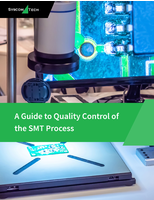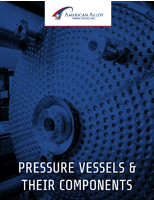Operating of Industrial Fans in Hazardous Location and Explosion Proof Environment
A significant number of ventilation equipment operates in difficult conditions ensuring the removal of hazardous gas environments from the working premises of enterprises. The category of explosive gas mixtures includes gas-air mixtures when ignited and a small part of which almost instantly ignites their entire volumes.
Explosion proof fans are high-strength, absolutely insensitive to chemical and corrosive attacks. This ventilation equipment is installed in the ventilation network in explosive zones and environments. Such fans are installed in production workshops and laboratories with specific working conditions and explosive environments. The task of explosion-proof fans is to move air through air ducts and supply it directly to rooms where it is necessary to create optimal pressure drops in order to avoid an explosive atmosphere as well as to remove gases, a dangerous concentration of which can provoke an explosion.
Depending on the explosion hazard class of the installation zones the fans can be protected by explosion proof sheaths of live parts, oil or quartz filling of the shells of live parts, sealing with a special polymer materials and other types of protection.
Materials for the manufacture of casings, impellers, inlet cones for explosion-proof fans are aluminum alloys, stainless steel, groups of dissimilar metals (carbon steel-brass, stainless steel-brass, electrically conductive plastic, bronze, aluminum alloy). Dissimilar materials are selected in such a way that sparking is excluded during friction or impact against each other. All components of such devices - housing, live parts, motor are explosion-proof.
Explosion proof performance presupposes the presence of certain constructive changes aimed at including the possibility of complying with the best possible conditions. Explosion proof fans in this respect operate mechanically and electrically and safely. For mechanical parts of the source the hazard is a rotating shaft from a blades, perforations or other deformations which create a strong force. The electrical circuits are open when starting or stopping. The solution to the problem is the installation of a hermetic protective skin on the connection point using materials that do not generate incineration or so on.
Explosion proof exhaust fans according to the principle of operation are divided into types: Centrifugal with high, medium, low pressure and Axial. According to the degree of resistance to the effects of an explosive atmosphere, they are divided into heat resistant and corrosion resistant. By installation method they are divided into inline duct, rooftop and wall fans.
An explosion proof duct fan is installed in ventilation systems with a complex circuit. With a significant length of the channels the required rate of removal of the project can provide for several ventilation units. Explosion proof duct fan or several fans of this category are installed in a separate room provided with effective noise insulation.
The explosion proof axial fan due to its design features provides quick and effective removal of explosive atmospheres from premises for various purposes. Axial fans are easy to install and operate. The device of such fans contributes to the direct removal of air mixtures in the axial direction at a high speed contributing to the timely neutralization of the working area. For small rooms (in laboratories, workshops) it is sufficient to install an axial wall fan. Explosion proof execution is provided with the use of groups of materials including the possibility of incision and the availability of special protective equipment.
The explosion proof design of roof fans provides for the use of pairs of dissimilar materials such as brass - carbon steel, aluminum alloys that do not generate sparks and do not create a risk of ignition of the transported gas mixtures. They are used for extractor hoods for hazardous products, mixtures or aerosols, vapors of flammable liquids, etc. The constructively explosion-proof large fan provides its own mono-block design of the radial type with side or vertical emissions.
The most commonly used type in industrial premises, in the mining and chemical industries is a centrifugal explosion proof fan. Convenient and compact design allows them to be connected to air ducts using flexible connections. Explosion proof centrifugal fans are manufactured in a wide range of power and volumes of the transported air-gas medium. Explosion proof radial fan has a number of advantages in comparison with axial counterparts: a) Lower cost; b) Possibility of varying the efficiency (when using variants of the impeller with blades bent forward or backward - in the latter case the efficiency of the equipment increases significantly); c) Reduced noise performance.
Equipment operating in explosive atmospheres, including an explosion proof axial fan must comply with the ISO 9001 standards governing quality and environmental safety.
Working with explosive atmospheres places high demands on all types of industrial equipment, including the elements of the ventilation system used. Flammable gases, vapors of chemically active substances and other flammable or explosive substances require the installation of explosion proof fans for safety reasons.
Explosion proof fans are manufactured in such a way that the design excludes contact of the working medium with objects that can cause sparks. Such fans are equipped with a special protective casing that tightly covers the current-carrying elements, and their axes and blades are made of special aluminum or brass alloys, which exclude the appearance of a spark.
The category of explosion proof corrosion resistant fans is manufactured using materials and components that exclude the formation of sparks as well as contact of the working medium with current-carrying elements. In addition, all the components of such fans are made of metals and alloys that are resistant to rust formation which ensures a long service life when working in aggressive environments.
All types of equipment used in an explosive environment with combustible gases, suspensions or dust, fibers, vapors must have constructive features that exclude the possibility of fire or explosion.




